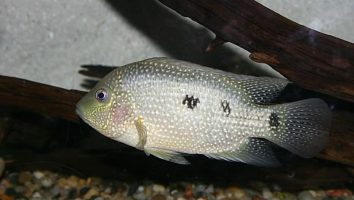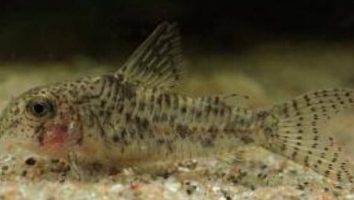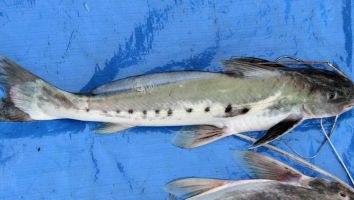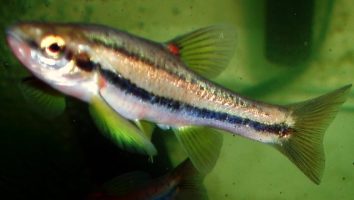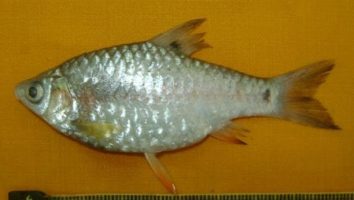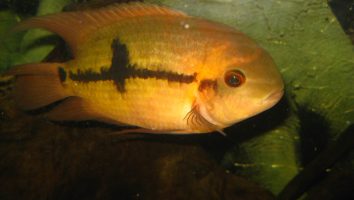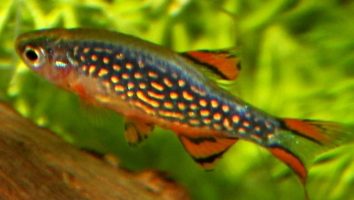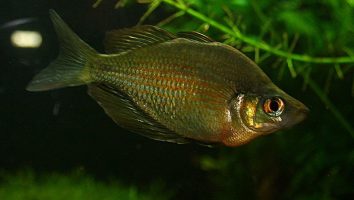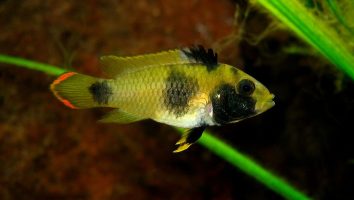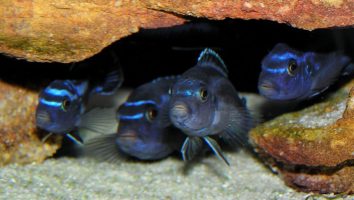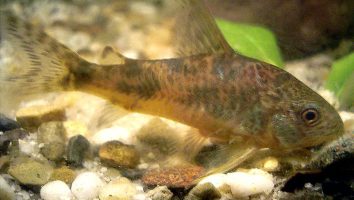The lemon tetra is a beautiful and popular freshwater fish that is easy to care for. They are perfect for beginner aquarists and make a great addition to any community tank.
Despite their small size, lemon tetras are very active swimmers and will do best in a tank that has plenty of space for them to swim around. They are also very social fish and should be kept in groups of at least 6.
In this guide, we will cover everything you need to know about lemon tetra care. This includes their diet, tank size, lifespan, and more!
Table of contents
Species overview
The lemon tetra (scientific name: Hyphessobrycon pulchripinnis) is a freshwater fish that is native to the rivers of South America. They are most commonly found in the Orinoco and Amazon river basins.
Lemon tetras are very peaceful fish and do well in community tanks. They are schooling fish, so it is best to keep them in groups of at least six.
These fish are very easy to care for and are a good choice for beginner aquarists. They are hardy fish that can tolerate a wide range of water conditions.
Lemon tetras are very popular fish due to their bright lemon-yellow coloration. They are a beautiful addition to any freshwater aquarium.
Appearance
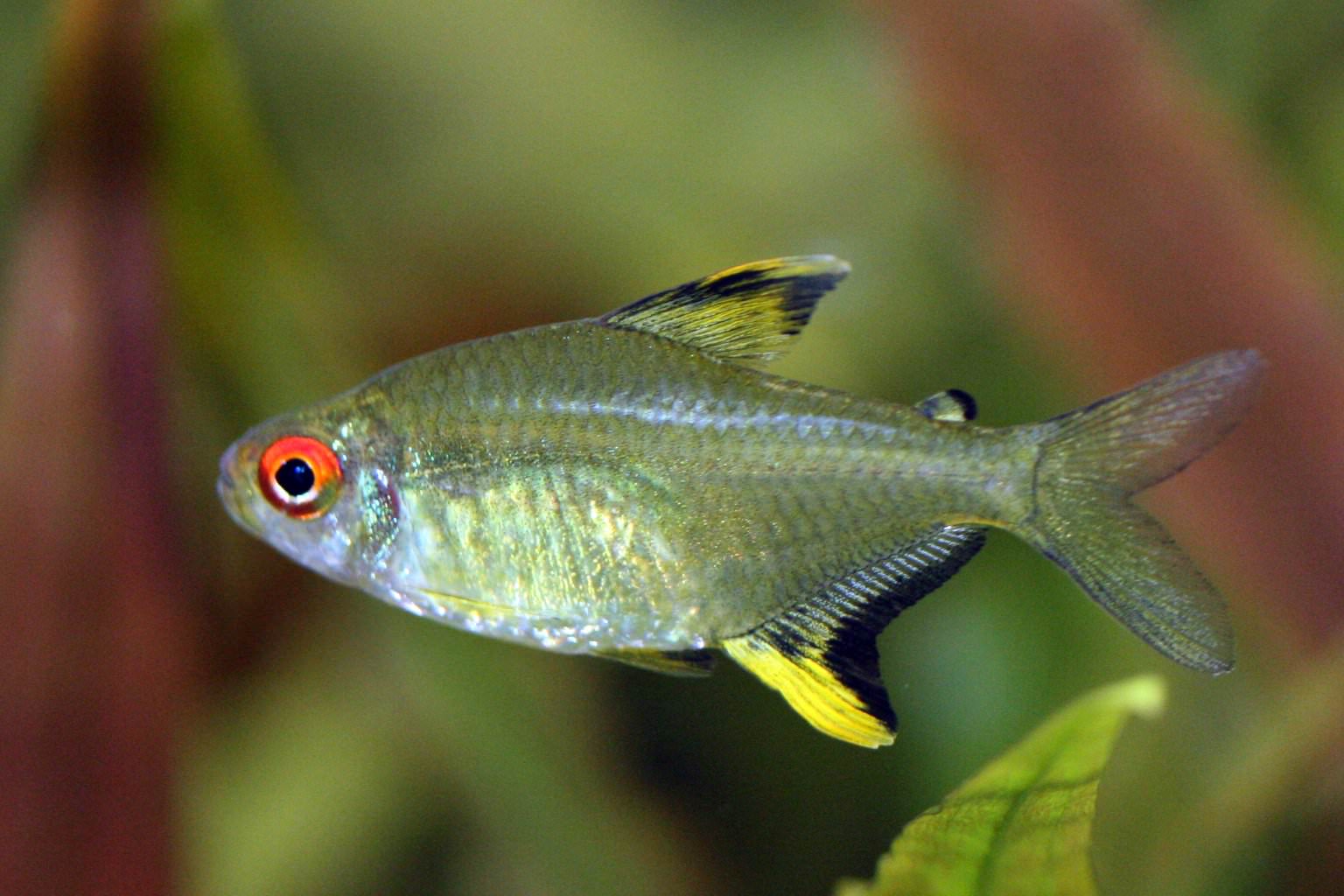
The first thing you’ll notice about this species is their beautiful yellow coloration. The base color of a lemon tetra is a bright yellow that extends from their heads all the way to the end of their tails.
This color is broken up by a black horizontal stripe that starts at their eyes and extends to the base of their tails. This stripe is pretty thick and really stands out against their lemon-yellow bodies.
The fins on a lemon tetra are all clear and relatively unremarkable. The dorsal fin is short and thin and starts about two-thirds of the way back on their bodies.
The anal fin is a bit longer than the dorsal but follows a similar placement. The caudal and pectoral fins are both clear and fairly small.
The lemon tetra has a long and thin body shape that is very hydrodynamic. This gives them the speed and agility they need to escape predators and catch prey.
Lifespan
The average lifespan of a lemon tetra is 5 to 8 years.
As with most fish, there are a number of factors that can impact the lifespan of a lemon tetra. Things like water quality, diet, and stress levels can all play a role in how long these fish live.
That said, lemon tetras are generally very hardy fish and can withstand a fair amount of neglect. As long as they’re not being outright abused, they should be able to live a relatively long life in captivity.
Size
The average lemon tetra size is around 2.5 inches, but they can grow up to 3 inches long. These fish are relatively small, so they don’t need a lot of space to swim around.
Tank
Tank Size
The minimum tank size for lemon tetras is 20 gallons. This is assuming you’re keeping them in a school of at least 5 or 6 fish (which you should).
We personally recommend a slightly larger tank if you can accommodate it. Every extra space will make a big difference and allow you to keep a larger school or more tank mates if you’re interested in a community tank.
Water Parameters
The lemon tetra is a freshwater fish that is found in the rivers of South America. In the wild, they inhabit slow-moving waters with a soft substrate.
Lemon tetras are a schooling fish, so they should be kept in groups of at least 6. A larger group is better, and they will do best in an aquarium that is at least 20 gallons.
Lemon tetras are very sensitive to changes in water parameters, so it is important to keep a close eye on the water quality in their aquarium.
The ideal water parameters for lemon tetras are:
- Water temperature: 72-81 degrees Fahrenheit
- pH levels: 6.0-7.8
- Water hardness: 2-12 dGH
- Alkalinity levels: 4-8 dKH
What To Put In Their Tank
The first thing you need to do is decide what kind of look you’re going for in the aquarium. Are you trying to recreate a natural environment or something a little more modern?
If you’re going for a naturalistic feel then you’ll want to use a substrate that’s dark in color. This will help give the appearance of depth and make your fish stand out more.
We recommend using a gravel substrate since it’s easy to maintain and looks great. Just make sure the gravel is smooth and doesn’t have any sharp edges.
As for plants, you have a lot of options. Just about any freshwater plant will do, but we prefer to use ones that are slow-growing. Fast-growing plants tend to take over the tank quickly and can be a pain to trim back.
Some good choices include Java Fern, Anubias, and Cryptocoryne. These plants are also pretty tough so they can handle being brushed up against by fish.
When it comes to decor, it’s really up to you. Rocks, driftwood, and caves are all suitable options. Just make sure whatever you choose can’t be easily knocked over by fish.
Common Diseases
The lemon tetra is a hardy fish that doesn’t fall ill very often. However, like all other freshwater fish, they can still get sick if the conditions in their tank are not ideal.
The most common disease that affects this species is ich. This is a parasite that can quickly become serious if it’s not dealt with. The most obvious sign of ich is the presence of white spots on the body of your fish.
If you notice this, it’s important to take action immediately. There are a number of different ways to treat ich, but the sooner you start the treatment the better.
Another thing to keep an eye out for is infections. These can be caused by a number of different things, but the most common is keeping your lemon tetra in a tank with a rough substrate.
If you notice any cuts or scars on your fish, it’s important to take them to the vet immediately. Infections can quickly become serious (and even deadly) if they’re not treated promptly.
As always, the best way to prevent your fish from getting sick is to maintain the quality of the water in their tank. A tank with clean and stable water conditions is always the best way to keep your fish healthy.
Behavior & Temperament
The lemon tetra (Aurantimmaculatus) is a peaceful, schooling fish that originates from the blackwater rivers of South America. As such, they are used to living in slow-moving water with very little light. In the wild, they can be found in groups of up to 100 individuals.
Lemon tetras are very peaceful fish and do well in community tanks. They are social creatures that prefer to be in groups of at least six of their own kind. When kept in smaller groups, they can become skittish and may not show their best colors.
Lemon tetras are not known to be fin nippers, but they may nibble on the fins of longer-finned fish. They are also known to eat smaller, weaker fish. As such, they should not be kept with very small fish or fish that are not able to defend themselves.
Lemon tetras are active fish that prefer to stay in the middle to upper levels of the tank. They are constantly on the move and should be provided with plenty of hiding places.
Tank Mates
The lemon tetra is a small, peaceful fish that does well in a community tank. These fish are active and love to swim in schools. As a result, they make great tank mates for other species that enjoy being in groups.
Lemon tetras are also tolerant of a wide range of water conditions. This makes them compatible with a variety of fish species.
To help get you started, here are some compatible tank mates that tend to work well:
- Neon Tetras
- Cardinal Tetras
- White Cloud Mountain Minnows
- Guppies
- Platies
- Mollies
- Endler’s Live Bearers
- Swordtails
Breeding
The lemon tetra is a beautiful, bright yellow fish that is popular in the aquarium trade. They are relatively easy to care for, and breeding them is not too difficult either.
Lemon tetras are egg-layers, and the female will lay her eggs on plant leaves or other surfaces in the tank. The male will then fertilize the eggs.
Once the eggs have been fertilized, the parents will usually eat them if they are not removed from the tank. Therefore, it is best to remove the adults from the tank once the eggs have been laid.
The eggs will hatch in about 24 hours, and the fry will be free-swimming a few days after that.
The fry can be fed baby brine shrimp or other small live foods. They will also eat some commercial flake foods designed for fry.
As they grow, you can gradually start feeding them larger foods until they are large enough to eat regular-sized aquarium fish food.
Conclusion
The lemon tetra is a beautiful, peaceful fish that is perfect for beginners. They are easy to care for and get along well with other community fish.
The only thing to be aware of is that they are sensitive to changes in their environment. So, if you do decide to get lemon tetras, be sure to do your research and acclimate them slowly to their new home.
Other than that, we think they make a great addition to any tank and we’re sure you’ll enjoy them as much as we do!

